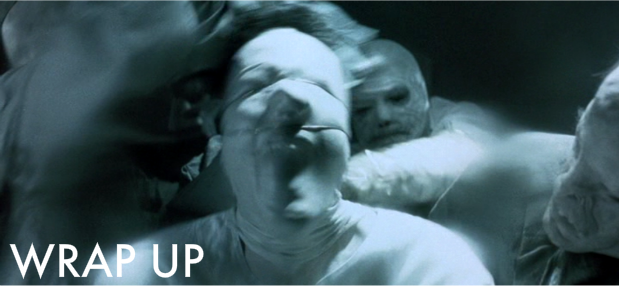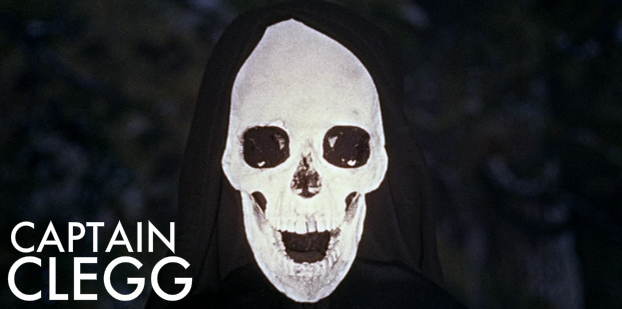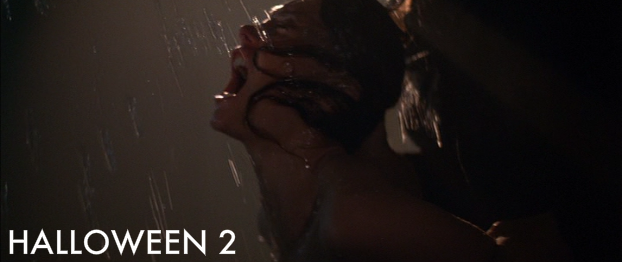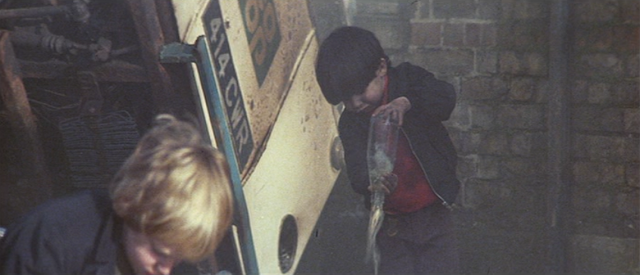What follows are EXCERPTS (in this case, generous ones). For more on the worlds of entertainment and fashion, subscribe to Icon Magazine. Live-action Looney Tune Steve-O" has built a career on the edge of self-destruction. For years, his recreational life followed suit. Between drugs and a death wish, the "Jackass 3D" star battled deep depression before a revelation steered him toward recovery. He is now almost three years sober with an autobiography on the way. I had the pleasure of speaking with him as he lounged in his Los Angeles apartment with his pound-rescued pooch. With a signature rasp, he communicates warmly with knowing chuckles. He calls South Florida home and offers insights regarding his new lifestyle, social issues, spirituality and his own dark journey...
ICON: It's easy to look at your TV shows and think you're a fool, but you're actually very dedicated to your stunts. Has that changed since going sober?
STEVE-O: I feel like there are a lot of people that think I'm boring or lame at this point, so making this new movie I definitely had something to prove. The most important thing has been to learn how to have separation between what I do and who I am. [When "Jackass Number 2" came out], I had no identity separate from the persona of "Steve-O". Just going to that premiere it seemed to dawn on me that I wasn't going to have a career forever, you know? I kinda came unraveled. This time around I've really put a lot of work into the separation between who I am and what I do. When I show up to work it's just "game on" and after that I can come home and be a pretty boring guy and feel happy about it.
I: And you're writing an autobiography?
S: I've been keeping myself real busy lately. Writing the book, doing stand-up comedy. I can't break bones and shove stuff up my butt forever, so I'm trying to figure out the next thing to do. I've done some stand-up before but now I'm hitting the comedy clubs every night and it's going great. I've had Dane Cook mentoring me. The other night I went on a couple comics after Sarah Silverman and immediately before [Cook].
I: You're vegan now. Is that related to the sobriety?
S: It's a fuckin' trip how it all went down. [My psychosis] started in 2006. I don't understand it. I have my theories, but the fact is I started hearing voices. I remember them telling me that I was gonna have to face consequences for everything that I did. There were some voices telling me that it was really important to them that I hold my breath. Suffocate myself. I'd be writhing around on the floor trying to do it, hysterically kicking. I'd take in some air and these voices would be mad at me, calling me a loser, telling me I was nothing. I can only describe those voices as demons.
[The demons] would make my apartment do wild shit. Curtains would be opening and closing, lights would be flashing. They wanted me to throw away my drugs and all my shoes were impatiently tapping their toes like, "We're waiting." One time I was sitting in a [swivel chair] with this pile of drugs in my body and thinking, the way I was going, I wasn't gonna live much longer. Very distinctly I thought, "I don't care if I die." Right when I thought those words, it was like a hand reached in. The chair spun around as if a big strong guy had grabbed it. It was like a fuckin' mechanical bull. The spirits were saying, "Think again man, that's not gonna work."
Some voices would chime in and say they were really worried about me. I remember there being a completely organized, full-on intervention. When [Johnny] Knoxville came and did [my] intervention, it was really like my third intervention. I had just hallucinated the first two.
There are all kinds of hallucinations. Tactile hallucinations are where you see it and feel it. I saw, heard and felt all this stuff. That's fact. Still to this day I do not believe that all those hallucinations were the products of drugs. At the risk of sounding hokey, what I believe is that the drugs tore down barriers between me and the spirit world and opened me up. I was made accessible. If these voices and hallucinations were products of drugs there would be variation going on, and there weren't.
I became obsessed with this spirit world. I was at the end of the line. I came across this video on YouTube and here's this Hare Krishna guy from India. This guy bluntly says, "How can you expect to be saved if you eat meat??" He's just perplexed by this. He's like, "What rational person can go around killing and eating meat and think they're gonna be saved?" So I'm sitting here snorting, smoking and drinking and my reaction to this is "Hey! I've gotta quit eating meat!!"
It's so funny, filling myself with drugs and alcohol but immediately when I watch this YouTube clip it becomes imperative for me to quit eating meat. It's a drug-crazed maniac that arrived at this but I've been sober for two and a half years and my belief has not changed one bit. After this life there's more to deal with, and that's a rad thing, but I immediately got so freaked out by what this guy said about being saved and eating meat that I became terrified about what the voices told me about facing consequences. You hear about the concept that we're all one and we're gonna experience everything we did to everyone else. Fuck man, I don't wanna take on all the fuckin' suffering I'm blowing out! I stopped eating meat right away. I had no motivation other than fear.
Less than a month later, Knoxville rolls in with the gang and they do this intervention on me and they lock me up in the psych ward. I bounced around different psych wards and rehab centers for a full six months, then I went into a sober living environment. I was serious enough about being sober that I kept myself in that halfway house until I had two full years of sobriety.
Over this course of time I became hip to the idea that it's important to replace fear as a motivator - to not be motivated by fear but rather by faith. Well, people don't like the word "faith". I think "love" is synonymous. So I worked past being afraid of punishment for eating meat. That doesn't mean all of a sudden I was cool with eating meat, all it means is I shifted my perspective. By not eating meat and having a more compassionate lifestyle, every time I eat I'm respecting myself, other life and the planet.
I don't wanna be on a soapbox and tell other people what to do. I'm not saying everyone should become a vegan. I'm not gonna save the world because I'm vegan. I'm just trying to get results out of myself, and the results are that I'm a happier person.
I: Are you still involved with your shoe line, Sneaux Shoes?
S: I can safely say that I burned that bridge with the Sneaux Shoes people. It was a good relationship - those people are great and I've got a lot of gratitude - but I don't wear anything that comes from animals anymore. What was so rad about it was that I also got creative control over the television commercials. The commercials are fucking great, man. "Sneaux Shoes: so tough, alligators can bite your feet! No problem!" And an alligator bit my foot! When I was in high school applying to universities, my major was communications. That was the first real, solid plan I had for myself - to become an advertising executive. I wanted to persuade people. So that relationship with Sneaux Shoes, it's probably the closest thing I did to fulfill that first dream.
But you know what sucks about leather, man? Not to harp on this, but I used to feel leather was fine because I was a meat-eating person. I wanted to be like the American Indians who would use every part of the animal. But the thing is, any leather products like purses, shoes, clothes... none of that comes from beef cows. There's leather cows they slaughter just for the leather and they throw away the meat, and [vice versa]. That's fuckin' bullshit!
I steer clear of all that stuff. If people knew what went into their leather and fur and meat... they work so hard to stay ignorant about what's behind all that...
I: Because it might scare them into a new lifestyle?
S: Yeah, and who am I to fuckin' change my lifestyle, then start pointing fingers and telling everybody else what to do? The thing that sucks the most is an asshole on a soapbox. I just feel like if people were to get educated, they would be more inclined to steer clear of that kind of cruelty.
I: What's the story behind your dog?
S: His name is Walter. We go tearing through the town on a longboard and he just hauls ass. He's the cutest little dog, but he's just so messed up. He's got issues. Nobody wanted him. I saved him from death row. He bites people, he destroys shit, he's a complete fucking pain in the ass, he won't shut up... he's just like me. I can totally relate to hurting people, destroying shit, being a complete non-stop pain in the ass. I dunno if this is like a living ammends, but he's my little angel and he's come into my life to teach me about love and tolerance and give me a lot of my own medicine.
The thing is: adopt, don't shop. In just America, there's millions of dogs being put down. The way they kill dogs, the last thing we need is more puppy mills.
Rescuing dogs from shelters, that's another thing like being vegan. This little dog is helping me so much because I gotta build my self-esteem. And who knows man, maybe this could all be training to start a family. Ha!! You never know. I think a lot of people would rather me keep taking blows to the nuts to prevent me from having a kid! We'll see what happens.
I: How would you like to be remembered?
S: Since I was a kid, there's been this riddle of our existence. We have one dominant instinct: to survive. This instinct overrides everything else about us. Fight or flight, you know? The only guarantee is that we're gonna die, and our strongest instinct is to try not to. That sucks! So for me I felt like the purpose of life is to figure out how it's cool to die. For me, I felt like the solution to the riddle was in the video camera. I could document my life and create a legacy. I was like, "After I die, people can still watch my shit! I won't actually be dead!"
Now I look at it entirely differently because sure, the footage will be around forever but it's got an expiration date. Kinda like milk. "Best before". "Sell by". "Jackass 3D" is like a carton of milk that says "Sell by October 15th." So October 15th the movie comes out and just like the milk. It's soured. Expired. I've really had to reevaluate what's up with that, you know?
I feel like I just want what everyone else wants. I just wanna be happy. That was kinda my downfall. I was getting too worried what other people thought. And I still have that in me. Like I said, I want to prove to everyone else that I haven't become lame because I'm sober, but what's most important - and it's the most important thing for everybody - is to be happy, and that's what I'm working on.







+poster+2+(SWE).jpg)











